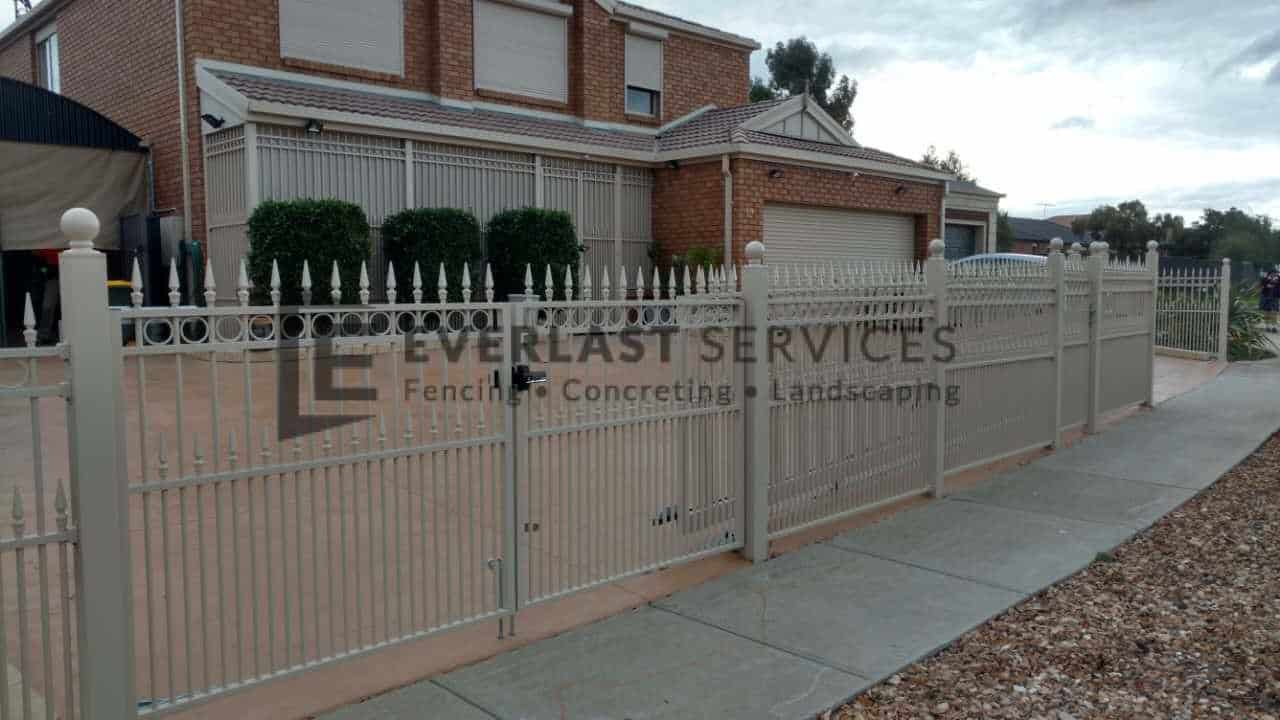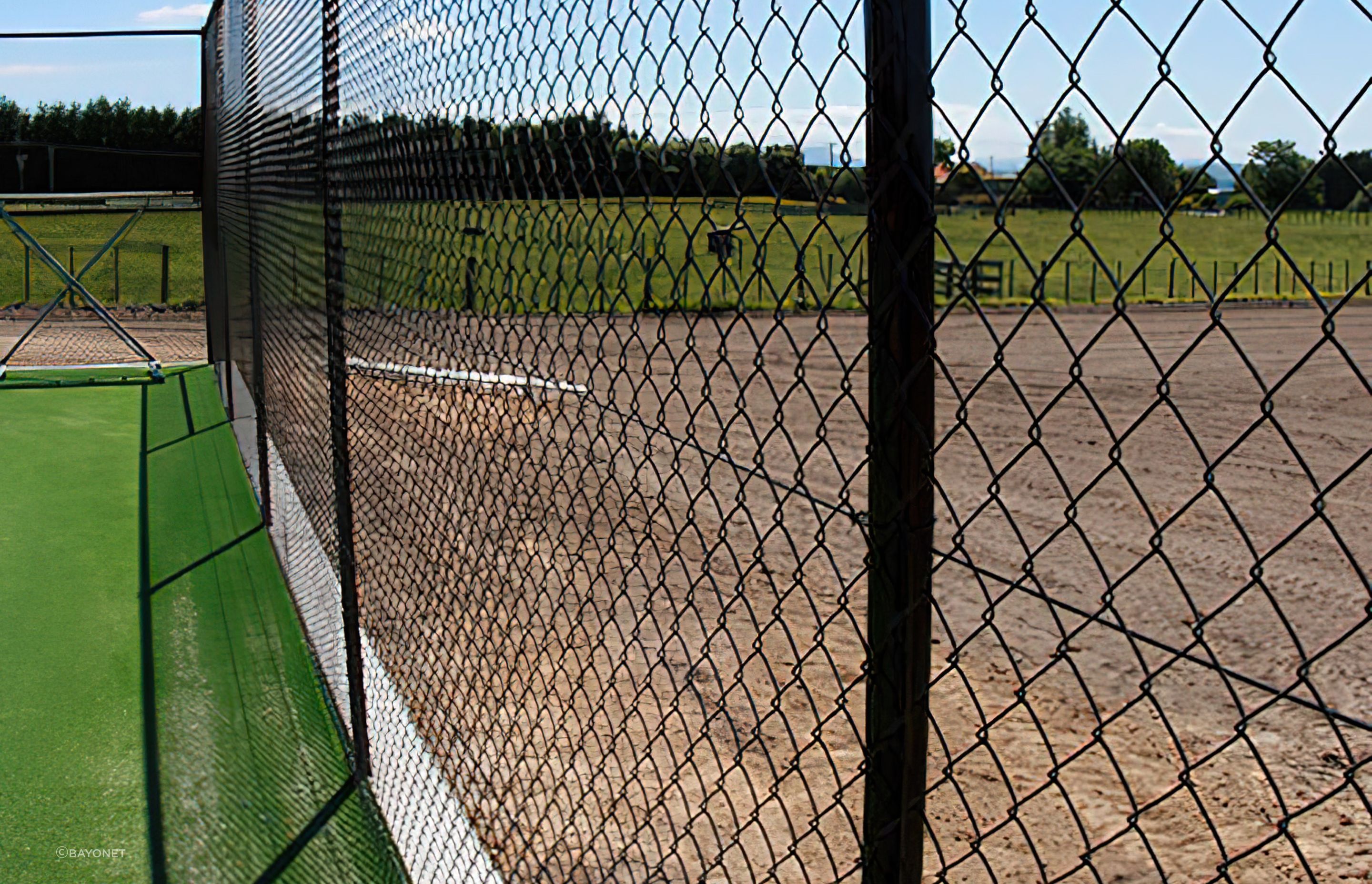Top 7 Reasons to Choose Fence Builders for Home Security
Top 7 Reasons to Choose Fence Builders for Home Security
Blog Article
A Comprehensive Overview to Fencing Install: What You Required to Learn About Fence Solutions
When it comes to setting up a fence, you've obtained a great deal to consider. You'll need to evaluate your residential property and make a decision if you desire to take on the setup yourself or hire an expert.
Recognizing Various Kinds Of Fencing Products
When you're choosing a fence, comprehending the various kinds of fence materials is vital. Steel secure fencing, like functioned iron or light weight aluminum, supplies stamina and elegance but may require corrosion defense. Eventually, picking the appropriate product will help you create a fencing that satisfies your needs and improves your home's value.
Evaluating Your Property and Secure Fencing Needs
Before you start your fencing setup, it's important to analyze your property boundaries and the purpose of your secure fencing. Recognizing neighborhood laws and permits will additionally aid you avoid any legal concerns down the line. By thinking about these factors, you'll assure your fence fulfills both your needs and area requirements.
Home Limits and Lines
Understanding your building borders is crucial for an effective fencing setup, as it not only helps you establish where your fence will certainly go yet also assures you're valuing your neighbors' room. Beginning by reviewing your home act or survey, which generally details the precise boundaries. You might additionally desire to consult with a specialist surveyor if you're unclear.
Keep in mind, neighborhood zoning legislations may dictate fence placement and height, so inspect those guidelines also. Taking these actions warranties your fencing is correctly placed and certified, making the whole process smoother for you.
Purpose of Fence
Fencing offers multiple purposes that can greatly boost your home. Initially, it gives safety by creating an obstacle that discourages invaders and shields your belongings. Second, it uses privacy, permitting you to enjoy your outside area without stressing over prying eyes. Third, fencing can define your residential property limits, making it clear where your room finishes and your neighbor's starts. In addition, it can boost the visual charm of your home, adding character and design while boosting aesthetic appeal. A well-placed fence can assist manage sound from close-by roadways or next-door neighbors and also keep animals and kids risk-free. By evaluating your details needs, you can select the right kind of fencing to accomplish these benefits efficiently.

Local Regulations and Permits
Just how can you guarantee your fencing setup complies with local policies? Some areas require permits for any new fencing, while others might only require them for taller frameworks.
In addition, consider home lines and any type of easements on your land. Noting your boundaries can stop disputes with neighbors or potential lawful issues. By understanding these laws upfront, you can avoid expensive mistakes and establish your fence is constructed to last, improving both your property's value and your assurance.
Local Regulations and Permits for Fencing
Before you start your fencing task, it is essential to inspect regional laws and get any kind of needed permits. Each city or county has its own rules relating to fencing height, materials, and positioning. These laws ensure that your fencing follows safety and security standards and neighborhood aesthetics.
You could need to submit a fence strategy, describing measurements and products. Some areas might even require a study to verify home boundaries.
Neglecting to follow these guidelines can result in penalties or forced elimination of your fence, squandering both money and time. Take the time to research and secure the appropriate authorizations for a smooth installment process. This action is vital in seeing to it your project straightens with local laws and area criteria.
Picking In Between DIY Installment and Expert Providers
Are you taking into consideration whether to take on the fence installment on your own or hire a professional? This choice depends upon numerous aspects. First, examine your skill level. If you're helpful and have experience with similar projects, DIY might save you money. Be straightforward about your capabilities; blunders can lead to added prices and migraines.
Next, consider the moment commitment. Setting up a fence takes some time, and if you're juggling a busy routine, working with an expert can ensure it gets done effectively. Additionally, believe regarding the intricacy of the task. If your backyard has tough terrain or particular design demands, professionals bring expertise that can make a difference.
Finally, aspect in neighborhood policies. An expert recognizes the authorizations and codes required, aiding you stay clear of prospective penalties. Inevitably, consider your skills, time, complexity, and laws to make the very best option for your fence project.
Step-by-Step Overview to Fence Setup
Once you've determined to relocate ahead with your fencing setup, adhering to a structured step-by-step method will certainly ensure a smooth procedure. Beginning by noting the fence line with risks and string to visualize the layout. Next off, check neighborhood regulations to confirm compliance with elevation and residential property lines.
Dig message openings at least two feet deep, spaced according to your fencing kind-- generally 6 to 8 feet apart. Place the posts into the holes see and load them with concrete for stability. Once the messages are set, attach the horizontal rails or panels, making sure they're level.
Protect the panels or pickets, confirming they align appropriately. If you're utilizing entrances, mount them last, ensuring they turn freely. Check for any loose links and make needed modifications. Your fence needs to now prepare to boost your building and give the personal privacy or security you require!
Upkeep Tips for Long Life of Your Fencing
To maintain your fencing looking wonderful and enduring longer, regular maintenance is vital. You need to establish up a cleaning timetable, evaluate for any type of damage, and use protective layers as required. By staying positive with these tasks, you'll assure your fence remains durable and attractive for years to come.
Routine Cleansing Schedule
While it could be simple to ignore, developing a normal cleaning schedule is essential for preserving the long life of your fence. Start by washing your fence with water at least as soon as every period to get rid of dust and debris. For wood fencings, make use of a mild soap solution and a soft brush to scrub away any kind of mold and mildew or mold. Do not forget to look for any important link kind of corrosion on steel fences; a wire brush can aid remove it, complied with by a coat of rust-resistant paint. If you stay in an area with hefty plant pollen or dirt, you may want to boost your cleansing regularity. Keeping your fencing tidy not just improves its appearance however likewise extends its life, saving you cash over time.
Inspect for Damage
Routinely evaluating your fencing for damages is essential if you desire to preserve its integrity and longevity. Start by walking around your fencing to look for visible indications of wear, such as splits, loosened boards, or rust. Examine for any indicators of insects, like termites or woodpeckers, that might endanger your fence's structure.
Apply Safety Coatings
After evaluating your fencing for damage, using safety coatings is a crucial action in guaranteeing its durability. Relying on the material, you'll want to pick the appropriate type of finish. For wood fencings, a top notch sealer or timber discolor can prevent wetness absorption and hinder bugs. If your fence is vinyl or steel, take into consideration a UV-protective spray or paint to avoid fading and corrosion.
See to it to clean the surface extensively prior to application, as dirt and crud can weaken the finish's effectiveness. Use the coating in dry weather condition for far better bond, and do not fail to remember to follow the supplier's directions for the finest results. Frequently reapply every couple of years to maintain your fencing looking excellent and standing strong against the elements.
Expense Factors To Consider and Budgeting for Your Fence Task
When preparing your fencing project, understanding price factors to consider is important to remaining within budget plan. Begin by figuring out the check it out type of material you desire, as costs can differ significantly in between wood, plastic, and metal. Don't neglect to consider labor expenses-- employing experts could conserve you time however can increase your overall expenses.
Following, gauge your property to calculate the direct video needed, as this directly effects material prices. Furthermore, think about any licenses you might require, which can add to your budget plan.

Last but not least, it's a good concept to allot a contingency fund for unforeseen expenditures. By intending meticulously and taking into consideration these aspects, you can develop a sensible budget that meets your secure fencing requires without breaking the financial institution.
Frequently Asked Concerns
For how long Does the Typical Fence Installation Take?
The standard fencing installation usually takes one to 3 days, depending upon the fence type and size of your backyard. You'll need to take into consideration any hold-ups as a result of weather or permit needs also.
What Should I Do if My Fence Is Harmed?
If your fencing is damaged, initially assess the level of the damages. Repair small issues yourself, but also for significant issues, think about speaking to a specialist. Don't wait too long; it'll aid protect against further issues.
Can I Install a Fencing on an Incline?
Yes, you can install a fencing on a slope. You'll need to readjust your installation approach, either by tipping the panels down or using a racked design to guarantee security and correct alignment with the terrain.
What Are the most effective Practices for Fencing Painting?
To repaint your fencing successfully, start with appropriate cleansing and sanding. Use high-quality paint and use in even strokes. Do not forget to select the right climate for painting, ensuring it's dry and moderate.
Exactly how Frequently Should I Inspect My Fencing?
You ought to inspect your fencing at the very least two times a year, concentrating on signs of damages, rot, or corrosion. Routine checks help you capture issues early, ensuring your fencing continues to be sturdy and aesthetically enticing much longer.
Report this page